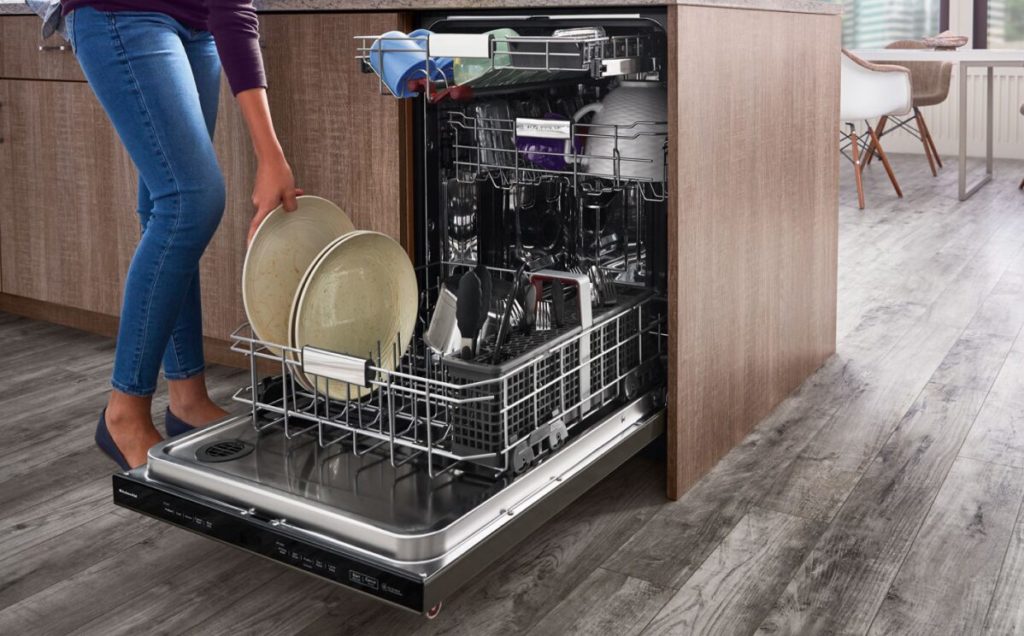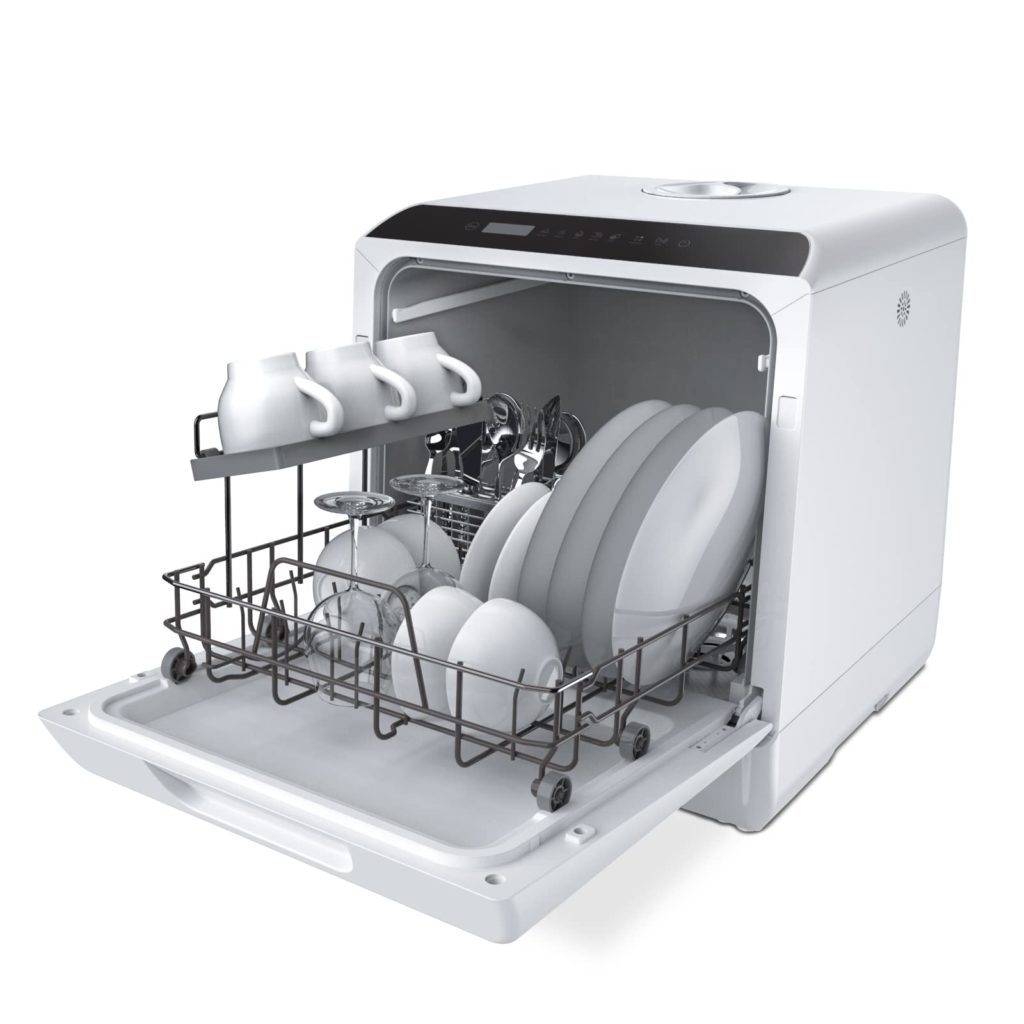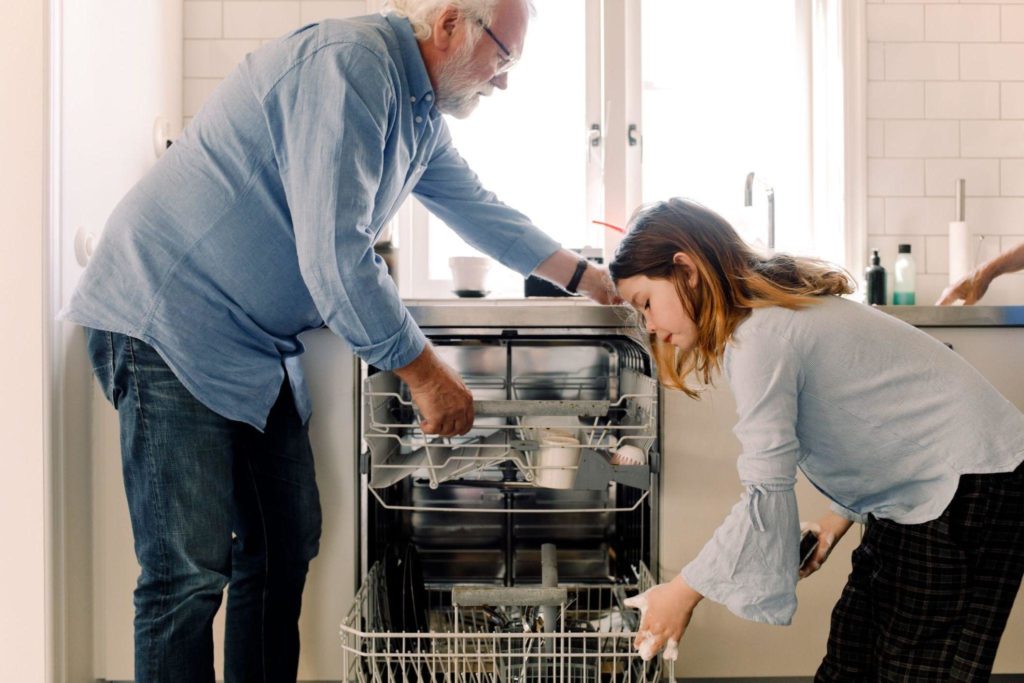When compared to hand-washing dishes, using a dishwasher may save you over 230 hours per year. Well, at least according to the Energy Star label. That means you can save almost half an hour each day, every day of the year, using just one piece of somewhat unnecessary kitchen hardware. But how do you choose the best dishwasher for your requirements when there are hundreds of models to choose from and supply is always shifting?
Inconveniently, dishwashers diminish the allure of getting things done quickly. These amazing machines can clean the dirtiest, greasiest areas with minimal energy and water. Whether you are making the switch from hand washing to dishwashers or are just looking to update, choosing the right dishwasher in terms of kind, style, capacity, and more is an important buying decision.

This buying guide will help you choose the best personal or commercial dishwashers according to your household or business needs.
Things to consider before buying a dishwasher

Now that dishwashers are a standard appliance in most homes, several manufacturers and models have flooded the market to meet consumer demand. In a market saturated with many makes and models, it might be challenging to zero in on the one that is ideal for your needs.
You should give some thought to several factors before selecting a certain dishwasher if you’re thinking about buying one to facilitate daily cleaning. Here are some things to keep in mind while shopping for a dishwasher.
Location of the control panel
Most dishwashers have their controls on the door’s upper panel. However, in other implementations, the door’s closure conceals a set of control panels installed along its upper edge. This is just for looks since it will give your space a clean, modern feel. It is inconvenient to have a hidden control panel because it makes it difficult to see how long the cycle is.
Finishing the outside
Dishwashers are available in a wide variety of colors and exterior finishes, including white, black, slate, stainless steel, and brushed stainless steel. Brush stainless steel, for example, is more difficult to leave fingerprints on than other coatings. The finish you choose should complement or match the rest of your kitchen equipment. The outside finish may be just cosmetic, but it still affects how your kitchen looks and feels.
Dimensions and capacity

When evaluating the size and capacity of a dishwasher, the number of place settings it can accommodate per load is commonly used as a yardstick. The vast majority of homes have a standard dishwasher. Since these dwellings often have the less square footage, a compact dishwasher is a better option for them.
Noise level
The decibel rating of a dishwasher shows how loud it is. A dishwasher’s decibel level should be less than 45. The constant rain has a sound intensity of 45 to 50 dB. Normal discussion occurs at a decibel level of 50 or higher. The price increases for quieter dishwashers are proportional to their decibel ratings.
Material of the tub
Dishwasher-safe containers are available in both plastic and stainless steel. Stainless steel tubs last longer, don’t rust, stain or corrode and dry out quickly. However, they have a higher price tag. It turns out that the tub’s material doesn’t make much of a difference in how well it cleans.
Water consumption
Dishwashers can’t use more than 5.8 gallons of water every cycle, which is a vast improvement over older models. You may select the most energy-efficient model according to the EPA’s ENERGY STAR program, which incorporates water efficiency and consumption statistics and energy usage into its certification criteria. Dishwashers that have earned the ENERGY STAR label consume only 3.5 gallons of water each cycle.
Cycles and speed
The normal, heavy, and light settings are the norm for today’s dishwashers. A dishwasher with programmable or built-in settings for a quick wash, delicate wash, rinse and hold, and so on, will often cost more but may save you money on power and water in the long term.
Energy conservation
The yearly power consumption and running expenses of a dishwasher are listed on an “Energy Guide” label. Dishwashers with the ENERGY STAR label meet or exceed federal efficiency standards.
Filters
The filter keeps food out of the wash water, preventing it from being redeposited on the clean dishes. Self-cleaning and manually cleaned models are available.
- The dirt gets ground up by a grinder in self-cleaning filters and then washed away.
- To keep them in good condition, manual filters need to be regularly removed and cleaned.
Drying efficiency
Dishwashers that are economical enough to use the residual heat from the tub to dry the dishes. Most of the time, this is good enough. The drying process may be sped up with the use of a heating element and a fan in some dishwashers.
Additional features
Dishwashers vary from one another based on whether they have optional functions besides the standard options. The greater the appliance’s price tag, the more features it often has. The most common add-ons for dishwashers are listed below.
- A third rack: Some models of top-loading dishwashers also have a third, thinner rack that can be stacked on top of the key rack.
- Adjustable racks: Many modern dishwashers have racks that can be moved to fit dishes of different heights, which is very helpful.
- Soil sensors: To aid in boosting water efficiency, soil sensors automatically change the cycle’s time and water use.
- Wash zones: Dishwashers have “wash zones” set aside for particularly grimy items that need to be cleaned using a more intensive cycle.
- Rinse/hold cycle: To reduce odors and prevent food from setting while waiting for the load to finish, you can use the rinse/hold cycle to wash the dishes.
- Smart-home technology and Wi-Fi connectivity: Thanks to smart-home technology and Wi-Fi connectivity, you can personalize your washing process from a computer or smartphone.
Final words

Choosing the right dishwasher is essential if you want it to shine as the major attraction in your kitchen. Look for a premium dishwasher that has the most features and the most attractive appearance. Do your homework before jumping to conclusions. Your budget and the size of your kitchen are two other factors to think about.
It makes sense to consider the finishing of possible dishwashers so you can find one that matches the rest of your kitchen. My dishwasher broke down a couple of days ago, so my husband and I need to buy a new one. All of the other appliances in my kitchen are stainless steel, so I’ll look for a dishwasher to match.
Thanks for mentioning that a dishwasher with programmable settings would be perfect. I’m hoping to get a new dishwasher this week because mine hasn’t been working for two months. It’d be good to visit a local showroom to look at some models.
I am so proud of my aunt who is finally opening the doors of her Asian restaurant to the public this January. Anyway, she’s looking for a commercial dishwasher so I’m helping her with it. Let me relay to her that a vast range of hues and external finishes, including white, black, slate, stainless steel, and brushed stainless steel, are available for dishwashers. For example, you said that fingerprints are less likely to stick on brush stainless steel than other coatings.